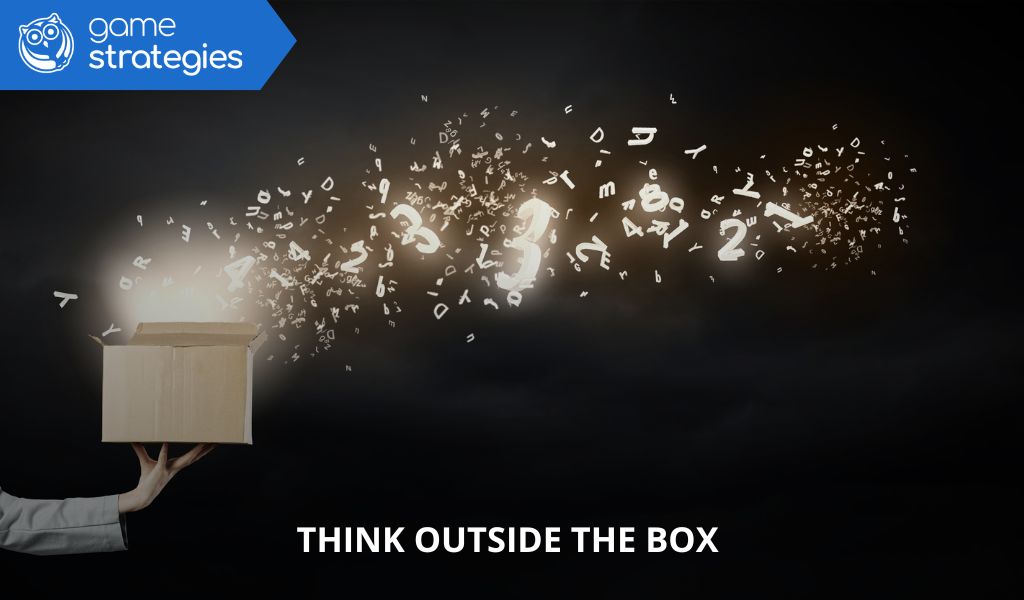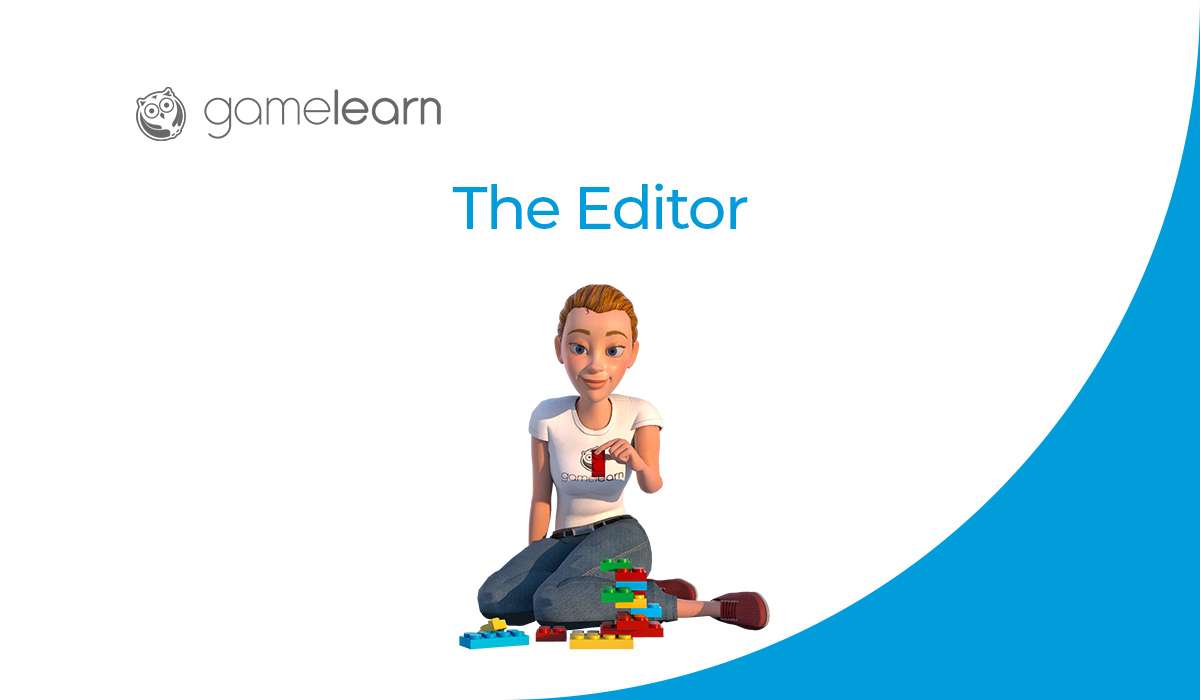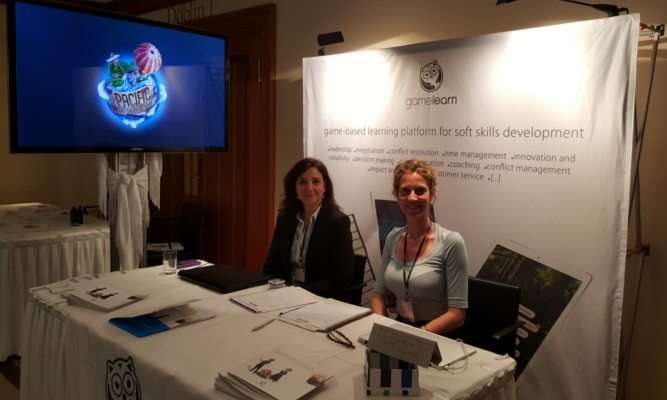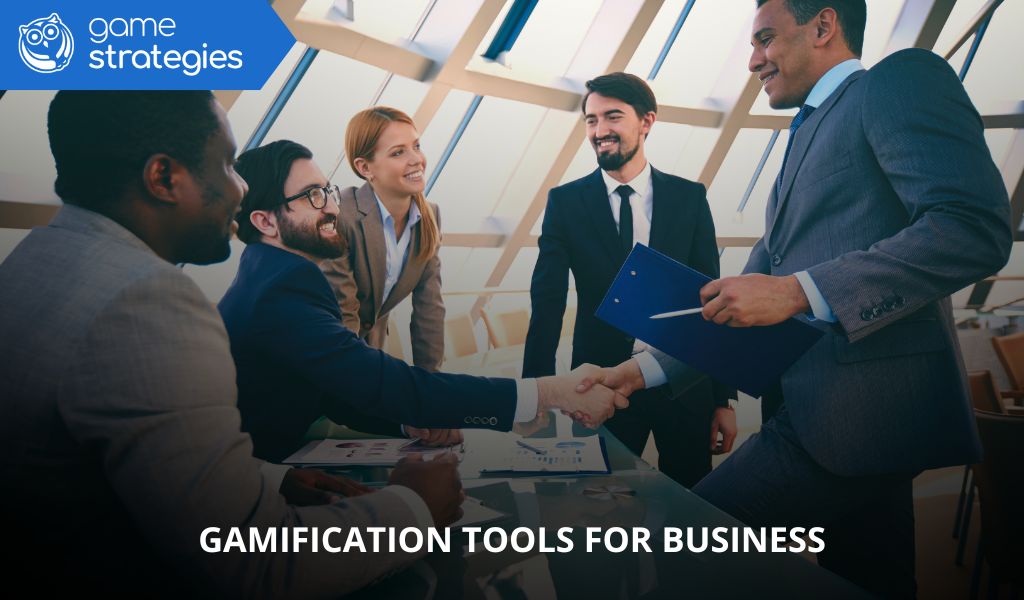“Think outside the box” is repeated in meetings, brainstorms and innovation processes. But do we truly understand what this phrase involves? Is it just a neat way to ask for new ideas, or a concrete capability that can be trained?
In this article, we explain what it really means to think outside the box, why it is a key professional skill in 2025, and how to foster it strategically in your team. You’ll also discover how platforms such as Game Strategies help turn this abstract idea into real, measurable behaviour.
What “think outside the box” really means
Origin of “think outside the box” and its application in professional settings
The expression think outside the box became popular in the 1970s, referencing the famous nine-dots puzzle where the solution requires going beyond the visible frame—the “box”.
In the workplace, it describes the ability to generate unconventional ideas, break established patterns and propose solutions that go beyond the obvious or habitual—quite literally, to think outside the box.
Why “think outside the box” is so in demand today
We live in a time of constant disruption: technological advances, new business models, social shifts and fast-evolving customer expectations. In response, organisations need to:
- Adapt with agility.
- Solve complex problems with innovative solutions.
- Differentiate in saturated markets.
That’s why cultivating disruptive thinking is essential for sustainability. It’s not only artistic creativity; it’s solving the new with different ideas—in short, learning to think outside the box under pressure.
The difference between spontaneous creativity and structured innovation
To think outside the box is not merely having a “brilliant brainwave”. It’s a capability that blends:
- Spontaneous creativity: free idea generation without censorship.
- Structured innovation: a systematic process to evaluate, prototype and implement those ideas.
The best solutions emerge when both interact. Platforms like Game Strategies create learning environments where this happens naturally through high-impact, gamified challenges and simulations.
Characteristics of people who think outside the box
Constant curiosity and critical thinking
Those who think outside the box often ask, “Why is this so?”—even when everything appears to work. Curiosity fuels exploration, and critical thinking filters useful ideas from unfounded notions.
The ability to challenge the status quo
Leaving the box means questioning norms, hierarchies, assumptions and traditional ways of doing things. It isn’t about opposing everything, but re-examining what we take for granted and exploring alternatives.
This ability can be trained in controlled environments, like those in Game Strategies, where simulations challenge users to choose different paths in complex scenarios—practising how to think outside the box safely.
Tolerance for error and a learning mindset
Disruptive thinking is born from trial and error. Innovative people:
- Aren’t afraid to make mistakes.
- Learn from every failed attempt.
- Persist until they find a viable solution.
Platforms such as Game Strategies create safe environments where mistakes don’t penalise but teach—fundamental for cultivating an innovative mindset that dares to think outside the box.
How to foster disruptive thinking so teams think outside the box

Safe environments where experimentation is allowed
For a team to think differently, it must first feel safe to speak up. Key practices include:
- Removing instant judgement of unusual ideas.
- Celebrating attempts, even if they don’t succeed.
- Creating space for exploration and prototyping.
With Game Strategies, teams learn through trial and error in environments designed to reinforce active learning—not to punish mistakes—so they can think outside the box with confidence.
Simulations, challenges and dynamics that break the mould
People learn best by experiencing. When the experience breaks routine, learning goes deeper. Use:
- Simulations with high-impact decisions.
- Challenges without a single “right” answer.
- Unexpected scenarios that force improvisation.
These experiences—available in Game Strategies—push users out of their comfort zone and activate divergent thinking to think outside the box under realistic pressure.
The importance of storytelling in idea generation
A good story creates emotion, connection and empathy. Using storytelling in learning helps to:
- Place challenges in realistic contexts.
- Engage participants emotionally.
- Stimulate creativity from a “what if…?” stance.
Game Strategies learning paths include interactive stories where users become protagonists facing dilemmas and complex decisions that require them to think outside the box.
Gamification exercises to stimulate new ways of thinking
Gamification boosts motivation and also breaks mental patterns. Practical ideas include:
- Awarding points for alternative solutions, not just “correct” ones.
- Team leaderboards for shared disruptive ideas.
- Timed challenges to encourage uncensored thinking.
- Recognition for those who dare to break the predictable.
With Game Strategies, you can integrate these dynamics into training, feedback and culture-change programmes that reward teams for learning to think outside the box.
How a platform like game strategies helps develop the ability to think outside the box
Thinking outside the box is not a gift; it’s a trainable competence. Like any skill, it needs practice, context and motivation. Game Strategies offers a complete solution to develop this capability at every level.
What makes game strategies different?
- Open-ended decision simulators: there isn’t a single correct answer. Every decision has consequences, encouraging creativity and exploration to think outside the box.
- Personalised narratives that connect with real business challenges.
- Deep gamification that rewards not only efficiency, but originality and continuous improvement.
- Behaviour analytics that assess how users think, how they act when faced with the unknown and how disruptive their decisions are.
- Adaptive learning environments where each experience adjusts to the collaborator’s profile and style.
Thanks to these capabilities, Game Strategies doesn’t just spark innovative thinking; it embeds it into organisational culture so teams routinely think outside the box
“Think outside the box” is no longer a buzzphrase. It’s an essential capability in complex, fast-changing and competitive environments. It’s about nurturing structured creativity, the courage to question the obvious and the will to propose new ways of doing things.
With the right tools, environment and strategic approach, any organisation can activate this competence across its teams. Game Strategies is the platform that turns that intention into a measurable reality.
¿De cuánta utilidad te ha parecido este contenido?
¡Haz clic en una estrella para puntuarlo!
Promedio de puntuación 5 / 5. Recuento de votos: 1
Hasta ahora, ¡no hay votos!. Sé el primero en puntuar este contenido.









